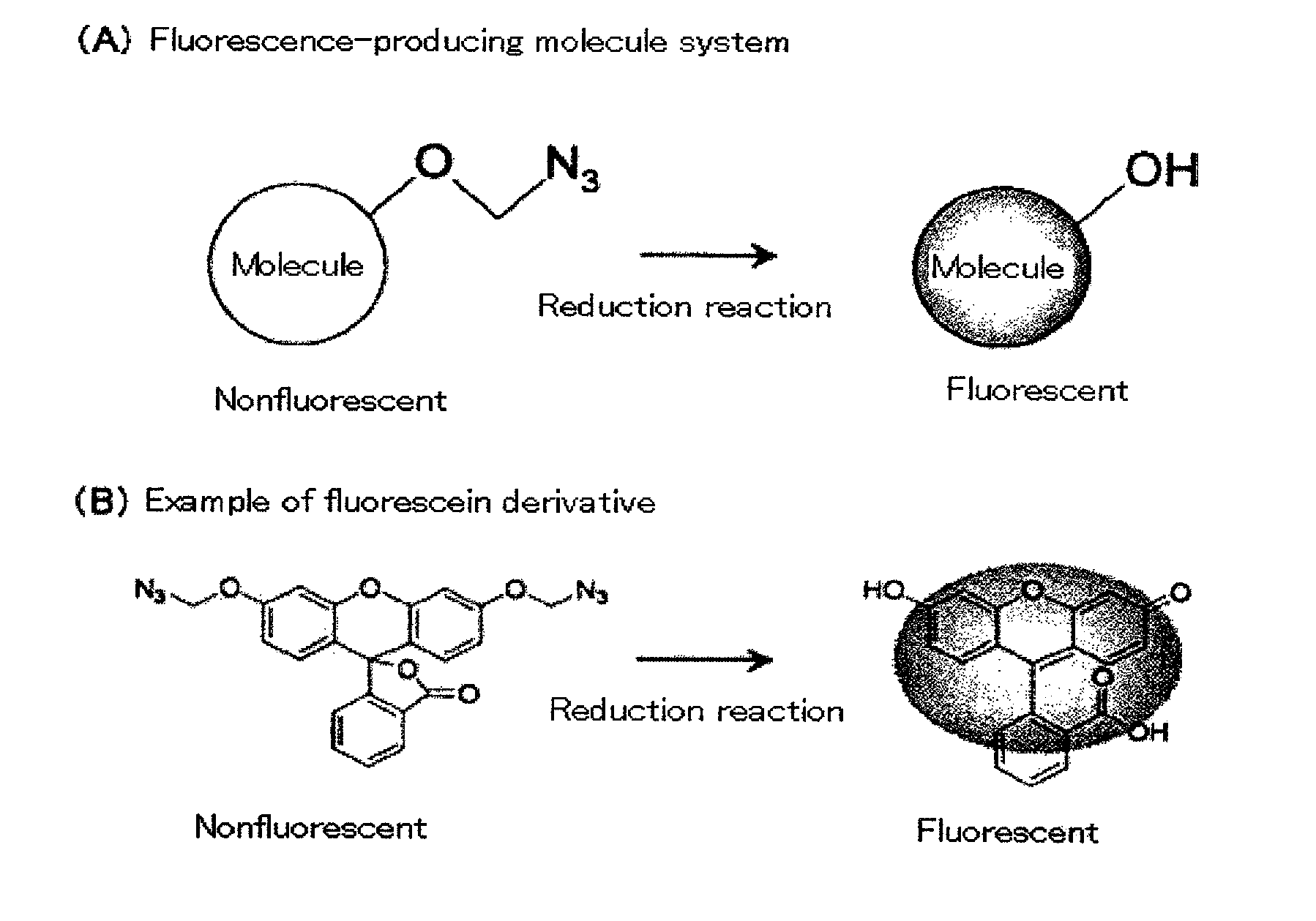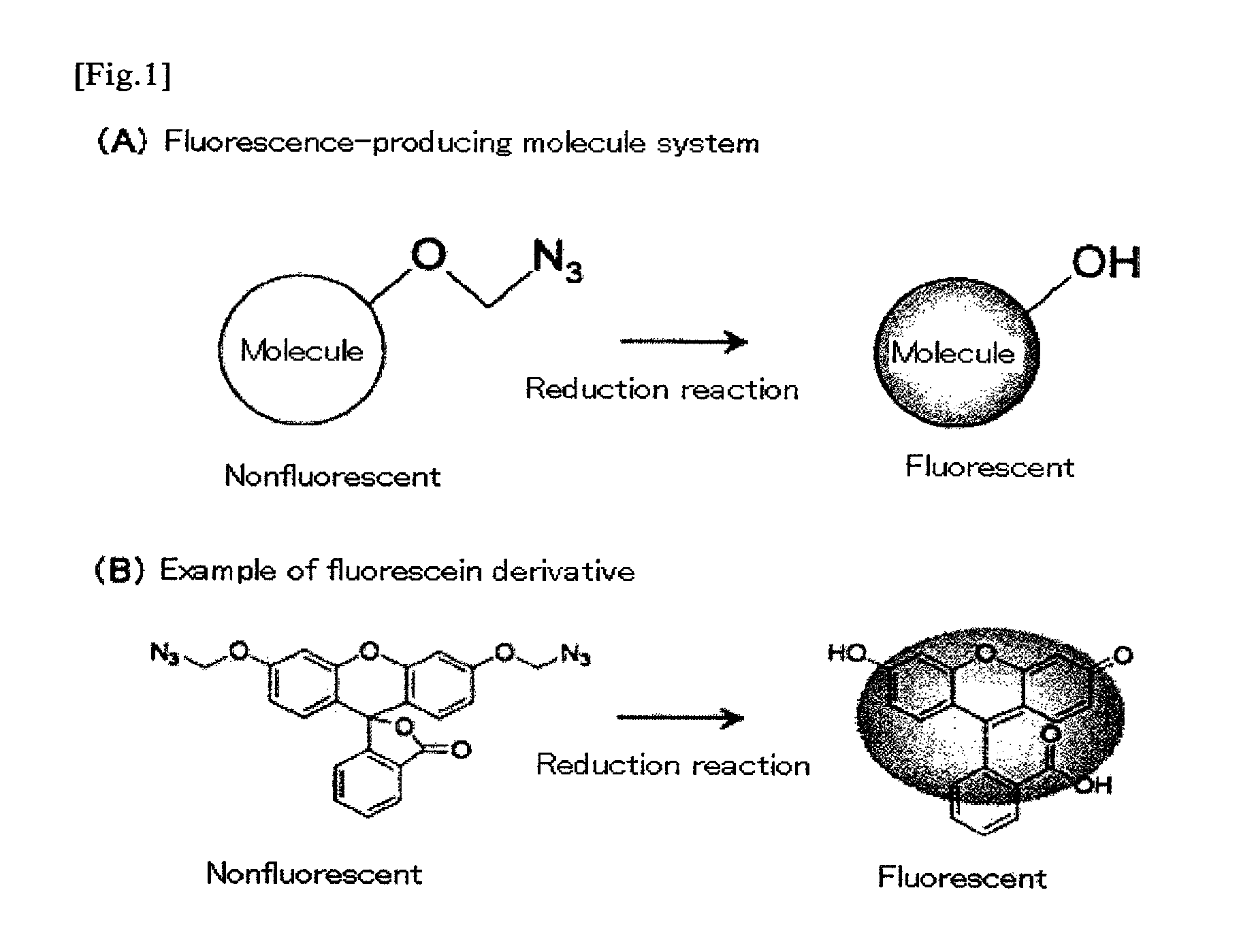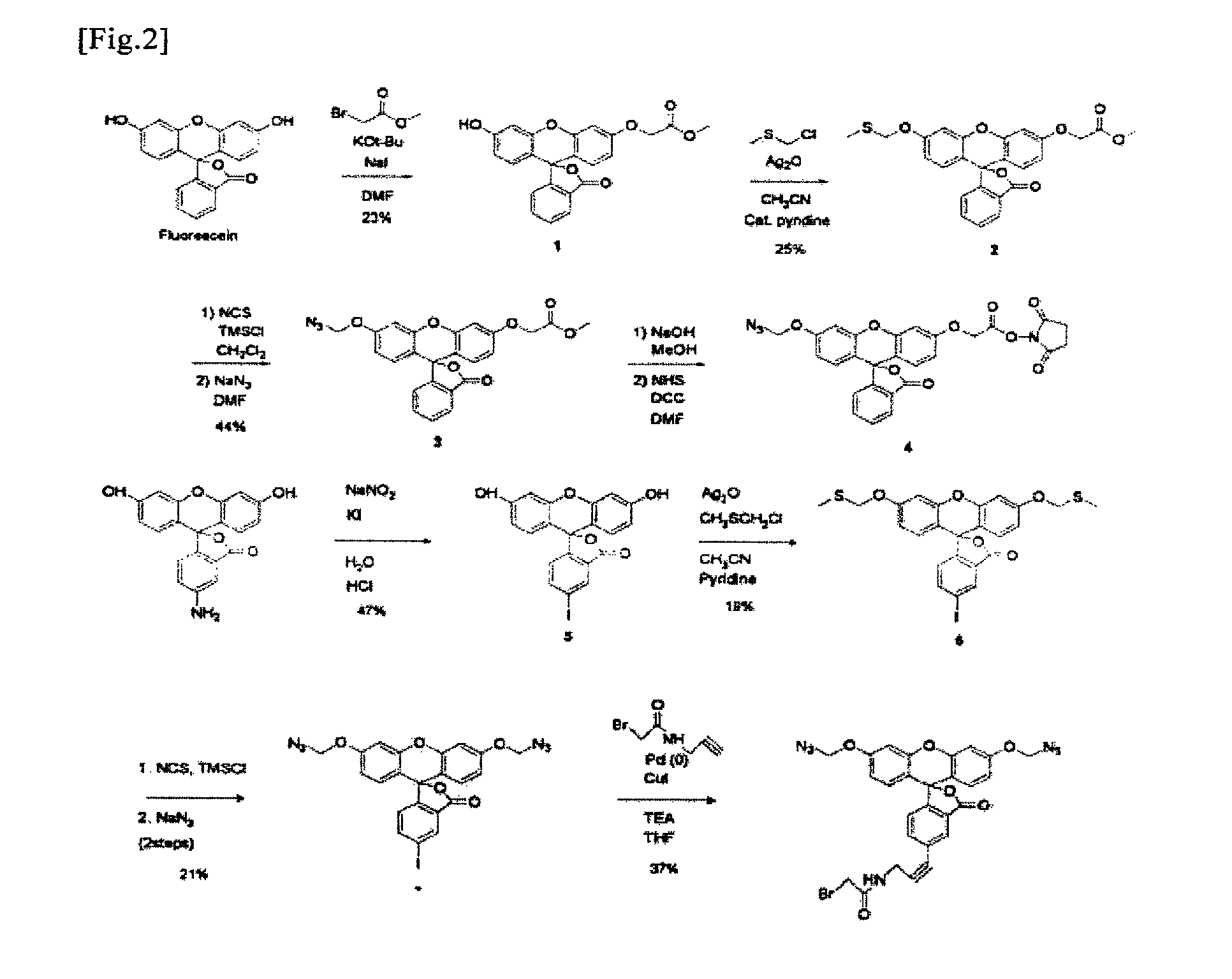Fluorescent molecule
a fluorescence-producing molecule and fluorescent technology, applied in the field of fluorescence-producing molecules, can solve the problems of difficult to carry out highly sensitive measurement using such probes, and achieve the effects of low cost, high signal/background ratio, and high detection efficiency
- Summary
- Abstract
- Description
- Claims
- Application Information
AI Technical Summary
Benefits of technology
Problems solved by technology
Method used
Image
Examples
example 1
Organic Synthesis of Monomethyl Azido Derivative of Fluorescein
(1) Synthesis of Monoalkyl Fluorescein (Compound 1 of FIG. 2)
[0042]Fluorescein (3.00 g, 9.03 mmol) and sodium iodide (271 mg, 1.81 mmol) were dissolved in DMF (50 ml) under ice bath cooling, and potassium t-butoxide (3.04 g, 27.1 mmol) dissolved in THF (30 ml) was then added to the solution. After the solution had become transparent, methyl bromoacetate (944 μl, 9.94 mmol) was slowly added thereto, and while gradually returning the reaction solution to room temperature, the mixture was stirred for 2.5 hours. Thereafter, the reaction was terminated with EtOAc, and liquid separation was then carried out using H2O and brine. An organic layer was dried over Na2SO4, and the residue was then purified by flash column chromatography (silica, gradient elution 30:1 CHCl3 / MeOH to 20:1 CHCl3 / MeOH with 0.5% triethylamine). The obtained monoalkyl fluorescein (Compound 1 of FIG. 2) was in the form of a transparent liquid (820 mg, 23%)....
example 2
Organic Synthesis of Bismethyl Azido Derivative of Fluorescein
(1) Synthesis of Iodofluorescein (Compound 5 of FIG. 2)
[0064]Fluorescein (1.60 g, 4.61 mmol) was dissolved in 12 N HCl (16.4 ml) and 8.2 g of ice. A sodium nitrite aqueous solution (397 mg, 5.76 mmol, 8.2 ml) was slowly added to the solution, and the obtained mixture was then stirred for 2.5 hours. Thereafter, a potassium iodide aqueous solution (15.3 g, 92.2 mmol, 13.2 ml) was slowly added to the solution, and the temperature of the reaction solution was then gradually returned to room temperature. After completion of the reaction for 5 hours, the reaction was terminated with CHCl3, and liquid separation was then carried out with H2O and brine. An organic layer was dried over Na2SO4, and the residue was then purified by flash column chromatography (silica, gradient elution 10:1 hexane / AcOEt to 3:1 hexane / AcOEt (v / v) with 0.5% triethylamine). The obtained iodofluorescein (Compound 5 of FIG. 2) was in the form of a yellow ...
example 3
Measurement of Fluorescence Intensity
[0087]The fluorescent properties of the monomethyl azido derivative (Compound 4 of FIG. 2) and bismethyl azido derivative (Compound 8 of FIG. 2) of fluorescein, which were obtained in Example 1 and Example 2, were analyzed. The monomethyl azido derivative (Compound 4 of FIG. 2) and the bismethyl azido derivative (Compound 8 of FIG. 2) were both nonfluorescent compounds. These compounds were treated with reducing agents (Compound 4: reaction with 100 mM dithiothreitol at room temperature for 2 hours; Compound 8: reaction with tris(carboxymethyl)phosphine at room temperature for 1 hour). As a result, the azido group was converted to a hydroxyl group, and a high fluorescent property was exhibited. When compared with the compounds before the treatment, fluorescent intensity was increased by a factor of approximately 300 (Compound 4 of FIG. 2) and by a factor of approximately 2600 (Compound 8 of FIG. 2) (FIG. 3).
PUM
| Property | Measurement | Unit |
|---|---|---|
| transparent | aaaaa | aaaaa |
| v/v | aaaaa | aaaaa |
| fluorescence wavelength | aaaaa | aaaaa |
Abstract
Description
Claims
Application Information
 Login to View More
Login to View More - R&D
- Intellectual Property
- Life Sciences
- Materials
- Tech Scout
- Unparalleled Data Quality
- Higher Quality Content
- 60% Fewer Hallucinations
Browse by: Latest US Patents, China's latest patents, Technical Efficacy Thesaurus, Application Domain, Technology Topic, Popular Technical Reports.
© 2025 PatSnap. All rights reserved.Legal|Privacy policy|Modern Slavery Act Transparency Statement|Sitemap|About US| Contact US: help@patsnap.com



